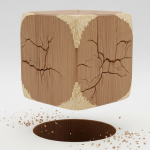UX Storytelling: Skyrocket Conversions (Do This Now!)
Summary: Don’t let your UX designs fall flat! This article provides actionable steps to master UX storytelling. Discover how to humanise your insights, build compelling narratives, and transform your designs into winning experiences.
Introduction: The Power of Narrative in UX
Storytelling has been the cornerstone of human connection since the dawn of time. Think about your favourite movies, the adverts that make you cry, the historical events that have moved nations – what do they all have in common? A compelling narrative.
In UX design, storytelling transcends mere presentation. It becomes the way we connect with users, build trust, and ultimately guide them towards desired actions. It’s about crafting experiences that resonate, that linger in the memory long after the user leaves your site or app.
The UX Reality: Where Good Designs Go Wrong
Let’s face it. Many UX projects get bogged down in wireframes, UI kits, and technical specifications. The human element gets lost. Countless campaigns launch with a whimper, failing to ignite any genuine excitement or enthusiasm. The result? Conversion rates that are flatter than a pancake!§
I’ve been there myself. Felt that deflating disappointment of a project that just didn’t connect. But what if there was a way to inject that missing ingredient, to transform those underwhelming results?
The UX Reality: Where Good Designs Go Wrong
Let’s face it. Many UX projects get bogged down in wireframes, UI kits, and technical specifications. The human element gets lost. Countless campaigns launch with a whimper, failing to ignite any genuine excitement or enthusiasm. The result? Conversion rates that are flatter than a pancake!
I’ve been there myself. Felt that deflating disappointment of a project that just didn’t connect. But what if there was a way to inject that missing ingredient, to transform those underwhelming results?
Unlocking Compelling UX Stories: The Core Elements
So, what are the secrets to crafting a UX story that captivates and converts? Here are the core elements to master:
- Focus on “Them”: Forget about selling your features. Make it about your audience. What are their needs? Their desires? Their pain points? The story should speak directly to their hearts.
- Relatable Characters: Think about creating characters that users can root for. Characters that mirror their own struggles and aspirations.
- Meaningful Conflict: A good story needs tension, a challenge to overcome. Introduce a problem or obstacle that your user faces.
- Satisfying Resolution: This is where you shine! Show how your design helps your user triumph over that challenge. This creates a sense of accomplishment and solidifies the positive association with your brand.
The “Problem-Agitate-Solve” (PAS) Framework: A Conversion Catalyst
If I had to pick one storytelling technique that delivers consistent results, it would be the “Problem-Agitate-Solve” (PAS) framework. Here’s how it works:
- Problem: Identify the core problem your target audience is facing.
- Agitate: Don’t just state the problem. Agitate it. Help your audience feel the pain, the frustration, the urgency. Bring it to life.
- Solve: Position your design (or product, or service) as the solution. Showcase how it alleviates the pain and delivers a positive outcome.

The power of PAS is undeniable. I recall a case study where a company employed this framework and saw a whopping 96% increase in conversions! That’s not just incremental improvement; that’s a game-changer.
Storytelling: More Than Just Conversions – Building Soft Skills
Here’s where storytelling transcends simple marketing tactics. It becomes a potent tool for developing your soft skills.
- Communication: Storytelling transforms dry data and technical jargon into engaging and understandable narratives.
- Empathy: By creating relatable characters, you demonstrate a profound understanding of user pain points.
- Collaboration: A compelling story creates shared understanding, building team alignment and buy-in.
UX Storytelling: The Leadership Imperative
For those in leadership roles or those who aspire to be, mastering storytelling is non-negotiable. Why? Because effective leadership is about inspiring and persuading.
A well-crafted story can:
- Cast a Vision: Paint a vivid and compelling picture of the future, inspiring others to follow your lead.
- Sell an Idea: Go beyond just listing features. Instead, tell a story about how those features solve a real user pain point.
- Foster Innovation: Use storytelling to ignite creativity, encourage risk-taking, and build a culture of experimentation.
Connecting User Needs to Business Objectives: The Bridge of UX Storytelling
One of the biggest challenges in UX is bridging the divide between user needs and business value. All too often, these are seen as opposing forces. Storytelling acts as a vital bridge, demonstrating how addressing user problems translates directly into business gains.
Instead of presenting dry research findings, craft narratives that illustrate the real-world impact of your designs. Show that reducing confusion on the checkout page (a user need) leads to a tangible increase in sales (business value). By speaking the language that both sides understand, you can secure buy-in and drive impactful change.
Actionable Steps: Putting UX Storytelling Into Practice
Ready to elevate your UX storytelling game? Here are some actionable steps you can implement today:
- Simplify, Simplify, Simplify: What is the shortest story that can still convey the core message?
- Humanise, Humanise, Humanise: Make your characters feel like real people. Give them quirks, flaws, and aspirations.
- Focus on Conflict & Resolution: Remember, a good story needs tension. What challenge is your user facing? How does your design help them overcome it?
- Craft a “Before & After” Narrative: Show the dramatic transformation your design creates.
Craft Your Story Equation
UX professionals can benefit from an easy equation in order to make the art of storytelling easy.
- Remember these letters so you can be reminded of your UX Storytelling
- If we create W then it will solve X.
- To do this, we need Y, and as a result, you’ll see Z.
- Let the letters be a foundation. Let the story breathe life into what you need to do. Let me know if you have any questions.
The Power of Actionable Statements
- ” Every design choice is a story waiting to be told. “
- ” Empathy is your superpower in crafting compelling narratives. “
- ” Turn data into characters – humanise the insights. “
- ” Your goal is to leave your stakeholders feeling something. “
Conclusion: Start Telling Your Story
UX storytelling isn’t just some buzzword or trend. It’s a fundamental approach to design that puts people at the center of the process. By mastering the art of narrative, you can connect with users on a deeper level, inspire action, and drive measurable results.
Don’t let your designs fall flat. Start telling your story today!
References Worth Reading
- NNGroup Persuasive Storytelling – https://www.nngroup.com/articles/persuasive-storytelling/
- Interaction Design Org Storytelling – https://www.interaction-design.org/literature/topics/storytelling


